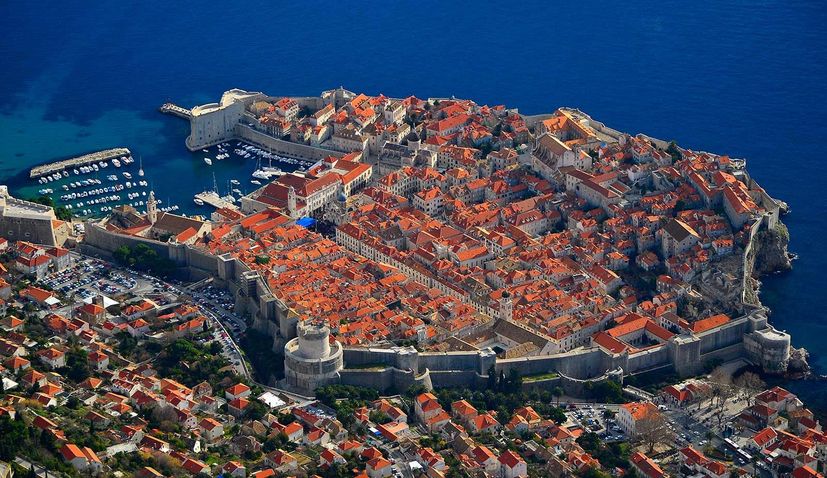If you want to know where is the first quarantine in Europe, and possibly the world, look no further than the medieval citadel city of Dubrovnik. Just outside the majestic walls of the city you will see a cluster of small stone houses. This is the Lazarettos of Dubrovnik. Nowadays, it is a clubbing hub and a tourist attraction.
But centuries ago, this was the first quarantine in Europe. As the coronavirus spreads across the globe, we can talk about some of the original quarantine places in Europe. Several years ago, Dubrovnik officials gave the Lazarettos complex to artists for cultural manifestations. At the time, the officials thought infectious diseases no longer pose a threat.
From Isolated Islands to Wooden Building Quarantine
In Croatia, the country with the first quarantines in the world, there was a specific system for fighting infectious diseases. At the beginning, they put people in quarantine on the islands of Mirkan, Bobara, and Supetar.
![]()
At the time, people were isolated on the islands. They had no roof on their head. The islands were un-inhabited. But officials understood that the living arrangements were more dangerous than the plague at the time. So, they built wooden buildings.
By the middle of the 15th century, quarantines in Croatia were complex buildings. They had their own guards, priests, medics, and even barbers. If you didn’t respect the rules of the quarantine, you would be sent to prison.
During plague, governments prohibited people from bringing livestock into the Republic. In the beginning, people spent 30 days in quarantine. But shortly after, officials increased the amount to 40 days. Even the word quarantine origins from the Italian word for 40 days.
What Prompt Dubrovnik to Build the First Quarantine
Some 700 years ago, officials in Dubrovnik and rest of Europe fought against a devastating outbreak of bubonic plaque. The disease started in medieval Italy. While physicians and health officials had no notion of viruses or bacteria, they understood enough about the Black Death to implement some anti-contagion measures.
In 1348, the plague arrived in cities like Venice and Milan. Officials in Dubrovnik reacted by putting emergency public health measures in place. They foreshadowed some of the best practices of social distancing and disinfecting surfaces.
Officials at the time knew they had to be very careful with goods being traded. They understood the disease could spread on objects and surfaces. They tried their best to limit person-to-person contact.
At the time, Dubrovnik was called Ragusa. The Adriatic port city was the first to pass legislation requiring the mandatory quarantine of all incoming ships and trade caravans. They did this to screen for infection.
The order reads that on July 27, 1377, the city’s Major Council passed “a law which stipulates that those who come from plaque-infested areas shall not enter the city or its district unless they spend a month on the islet of Mrkan or in the town of Cavtat”. This was for the purpose of disinfection.
Mrkan island was an uninhabited rocky island south of the city, while Cavtat was located at the end of the caravan road used by overland traders en route to Dubrovnik.
Ragusa’s quarantine edict is one of the greatest achievements of medieval medicine. At the time, Dubrovnik officials showed a remarkable understanding of incubation periods.
The 40 Day Quarantine Theory
In Italy, the 30-day stipulated period was known as trentino. However, doctors and officials had the authority to impose longer stays. The word quarantine is a direct descendent of “quarantine”, which is the Italian word for a 40-day period.
But why 40 days? Well, it is all connected to religion and medieval Christians. In religious books, the stories say that when God flooded the Earth, it rained for 40 days and 40 nights. In the same spirit, Jesus fasted in the wilderness for 40 days.
Even before the plaque, the biblical notion of a 40-day period of purification had crossed over into health practices. For example, after childbirth, the mother rests for 40 days.
Was Dubrovnik Successful?
Even with the quarantine law, Dubrovnik was hit hard by the outbreak of the plague in 1391 and 1397. The city’s economy also took a hit.
Even though the quarantine law didn’t fully protect Dubrovnik from the disease, the laws served the big purpose. They restored a sense of order.
Epidemics were significantly suppressed thanks to the Lazarettos. The last one was in 1815-16. Today, they serve for recreational purposes. Who knows, the city of Dubrovnik might use them again in protection against Covid-19 virus.



